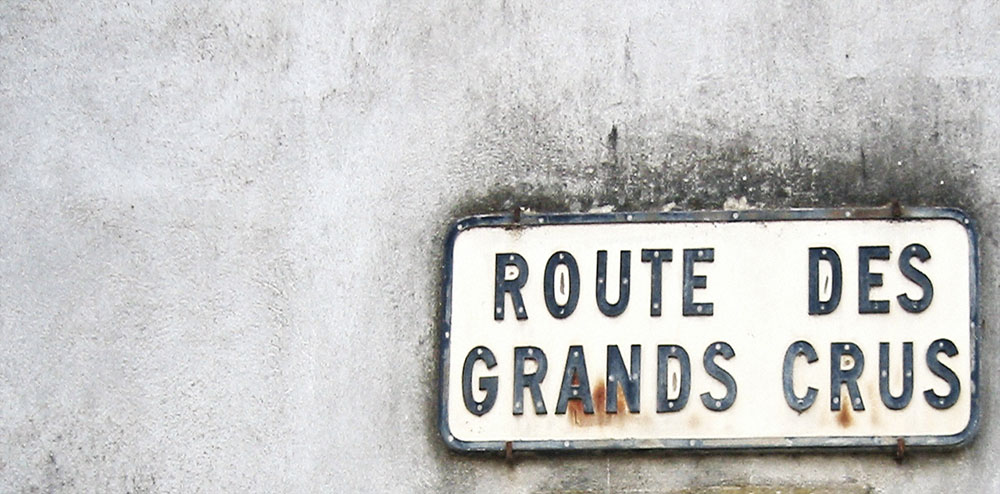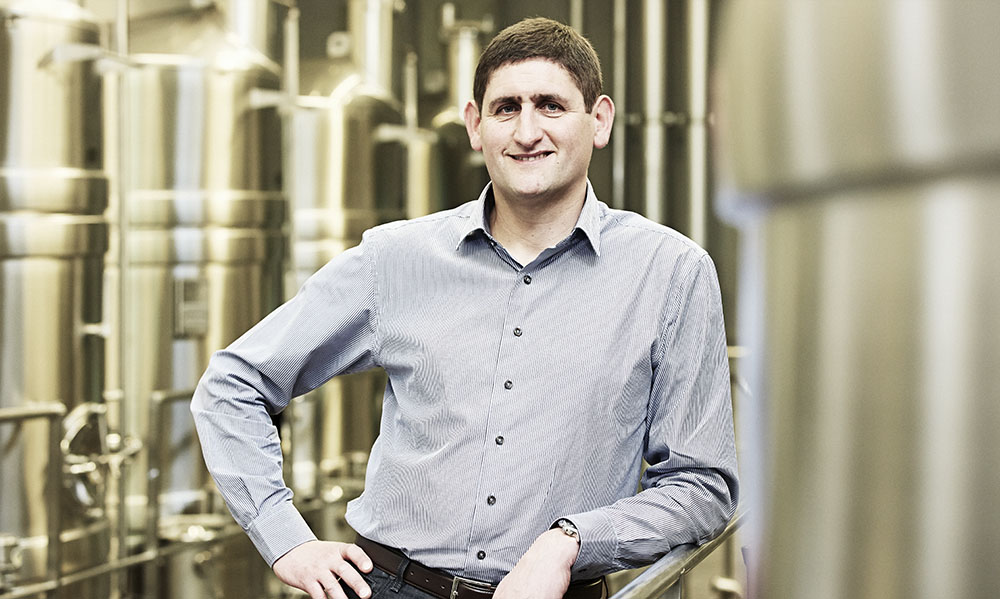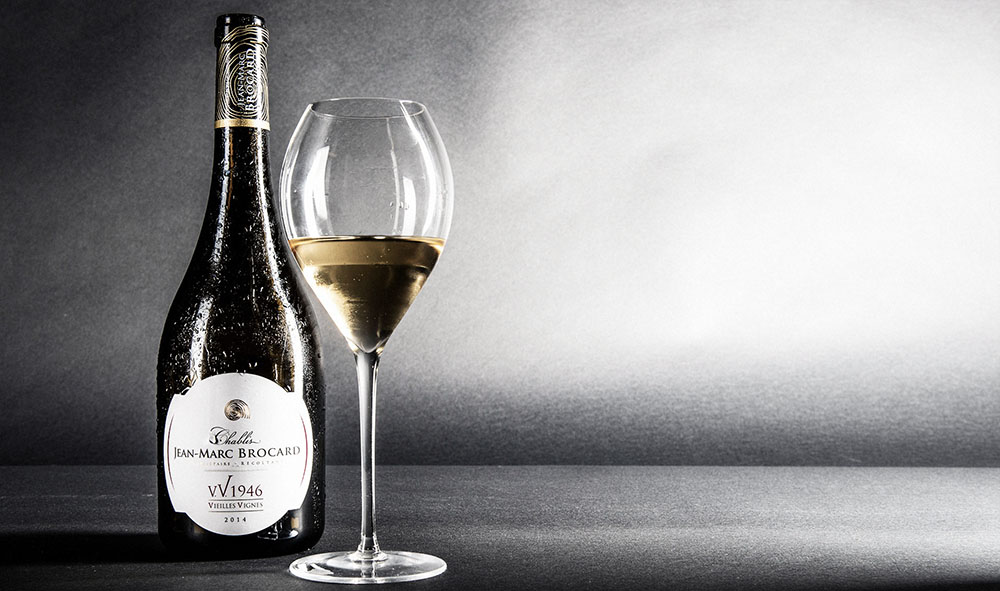
To quote Dickens, “It was the best of times, it was the worst of times… ” Indeed, the growers and producers of Chablis could relate in 2016.
Let’s start with the best of times: there are currently two top-notch Chablis vintages on the market — 2014 and 2015 (as well as some excellent top-end 2012s). Both vintages are great yet diametrically opposed. 2014 is classic Chablis, with slicing acidity, deep minerality and long life. 2015, on the other hand, was a warm year, and the wines are ripe and round, providing instant gratification.
Now for the worst: 2016, viticulturally, has been the year of the four horsemen of the apocalypse. The growing season started with a spring frost, which was followed by hail, which was then followed by a second round of hail and which was finally capped off by a huge mildew outbreak. Even the old-time growers can’t remember such a horrific start to a season. Yields for the fortunate will be half. For others, there will be no grapes at all. I remember interviewing one of the most respected producers in the region this past summer. The look in his eyes was heartbreaking as he recounted that he would have no harvest this year. He followed up by saying that conditions like this only happen once in a generation and that this was his year.
Chablis, for many, is ground zero for the argument of terroir. Chardonnay is the grape, of which the majority is unadorned with new oak, allowing the soil known as Kimmeridgian — a clay-limestone mixture pebbled with fossilized seashells — to convey a deep saline/flinty/wet stone minerality to the wines.
Petit Chablis
Historically, Petit Chablis has played second fiddle to regular Chablis. These vineyards, which are situated on the periphery of the appellation, are on a bedrock of Portlandian, a much harder soil containing minimal seashells. It is also worth mentioning that many Portlandian vineyards are located at the top of the slope, just above the more famous Chablis/Kimmeridgian vineyards.
Stylistically, Petit Chablis produces wines whithatch are more fruit driven and with less minerality than traditional Chablis. It does not mean the wine is of lesser quality, it is merely different. Since the price of land in the more famous Chablis region has steadily increased, many vignerons and young guns have been drawn to the Portlandian lands due to economics, and are now attempting to exploit their potential.
89 Vincent Dauvissat Petit Chablis 2015 ($50)
This Chardonnay is anything but little. Honey, yellow apple, anise, peach, earth. Fullish, there is great poise and density, as well as length.
88 La Manufacture Petit Chablis 2014 ($30)
This two-year-old Domaine has produced a superb Petit Chablis that is precise and linear. Apple, cream, peach, anise and minerals. Crisp acidity and fine length round out the package.
87 Gerard Tremblay Petit Chablis 2015 ($40)
Sweet apple, fresh-cut white flowers, honey, citrus and peach are nestled on broad shoulders. Creamy qualities kick in on the finale.
Chablis
Basic Chablis is the workhorse appellation. Out of 5400 hectares, close to 3000 hectares is dedicated to this appellation. It is also where value can be found alongside mediocrity. Size, vintage variability and production quality all contribute to the final outcome. However, when done well, you can obtain a great bottle of Chablis for $25.
91 Domaine Testut Vieilles Vignes Chablis 2015 ($50)
The combination of half-century-old vines and a warm year has produced a lush Chablis with honey, mineral, apple, cherry pit, vanilla and toasty notes. Excellent length.
90 Jean-Marc Brocard Les Vieilles Vignes de Sainte Claire 2015 ($50)
Fermented via natural yeasts, there is a mix of honey, mineral, binned apple, nuts and citrus. There is depth on the palate as well as elevated acidity for the vintage.
90 Château de Béru Chablis 2015 ($70)
Béru is one of a handful of biodynamic producers in Chablis, and without a doubt, this has helped to propel them into the upper echelon of Chablis producers. This is a full-bodied Chablis with peach, pear, honey, iodine, cream and spice qualities. Weighty but not heavy at all.
90 Domaine Jean Collet & Fils Vieilles Vignes Chablis 2014 ($40)
Made from 80-year-old vines. Deep minerality encapsulates the apple, lemon, white flowers and notes of honey. Mid-weight with brisk acidity and great length.
89 Domaine Barat Chablis 2015 ($40)
A round and appealing Chablis with honey, peach, citrus and apple on the nose. It is when it hits the taste buds that the crushed rock factor explodes. Splendid persistency.
88 William Fèvre Champs Royaux Chablis 2014 ($15)
Fèvre’s workhorse Chablis — year in, year out — is a textbook example of what a good Chablis should be: dry, crisp citrus and mineral driven. It also represents solid value! A perfect foil for oysters on the half shell.
88 Domaine Laroche Saint-Martin Chablis 2015 ($25)
This stalwart of the LCBO and SAQ general lists delivers the goods in the form of citrus, honey, green apple, anise and minerals. Easy drinking and soft on the palate, it should appeal equally to both Old and New World wine lovers.
Chablis Premier Cru
Reliability arrives with the forty Premier Cru vineyards, the majority of which are planted on southeast-facing slopes alongside the Serein River, helping to capture early-morning sun and heat, and in turn creating fuller wines. It is generally at this level that one starts to see some new oak influence. Forty dollars brings home the minerality.
92 La Chablisienne Premier Cru Le Volarent 2014 ($60)
When it comes to terroir, my pleasant discovery on my recent trip to Chablis was the vineyard known as Le Volarent, which produces racy, concentrated and powerful wines with deep saline minerality. This rendition adds apple, flowers, crisp green apple and pear. Excellent length. This wine will age gracefully for 15 years.
92 Patrick Piuze Les Forêts Premier Cru 2015 ($60)
Quebecer Patrick Piuze started his own Domaine in 2008 after having worked at Domaine Brocard, Olivier Leflaive and Verget. He generally harvests his grapes at around 12% potential alcohol to ensure that the terroir expresses itself in his wines. A pure expression of Chablis as vivid acidity, crystalline minerality and citrus qualities explode out of the glass and onto the taste buds.
91 Charly Nicolle Mont de Milieu Premier Cru 2014 ($60)
A laser beam of seashore minerality and brisk acidity dissect the lemon, grapefruit, pear, honey, white flower and hints of pineapple. Long and well suited for freshwater perch with a lemon butter sauce.
91 William Fèvre Montée de Tonnerre Premier Cru 2014 ($50)
Made from vines planted in 1936. Great density and verve. Apple and pear juice, citrus, lime and smoky minerals all the way around. It should age well for a decade.
91 Billaud-Simon Les Vaillons Premier Cru 2014 ($50)
Straight-up Chablis with chalky minerals, apple, citrus, red and yellow apple and hints of honey. Linear, with laser acidity and long on the aftertaste.
91 Domaine Jean Collet & Fils Montmains Premier Cru 2014 ($50)
Citrus, apple, honey, white peach and vanilla are built on a dense yet crisp frame. Crushed seashell minerality takes over the palate and carries long into the sunset.
90 Domaine Sébastien Dampt Côte de Léchet Premier Cru 2015 ($50)
A softer, rounder style of Chablis due to the hot year. Honey, apple, banana, cream, spice and golden delicious apple. Splendid length and ready to drink, preferably with lobster or seared scallops.
89 Domaine Gerard Tremblay Fourchaume Premier Cru 2014 ($40)
From vines planted in 1951 comes this mid-weight Chablis, which exudes textbook qualities of mineral, lemon, apple and florality.

Chablis Grand Cru
One of the first things any serious wine lover learns is the 7 Grand Crus (or 8, if you count La Moutonne) of Chablis: Bougros, Blanchot, Preuses, Valmur, Grenouilles, Vaudésir and Les Clos. Located directly above the town of Chablis, with a privileged south–southwestern exposure, these 100 hectares are the zenith and produce the fullest wines. Twenty years ago, when I first got into this business, they were some of the finest white wine deals in the world. Today, due to demand, prices are out of range for most as they hover around the $100 mark. That said, if you compare them against Grand Cru whites from the Côte de Beaune, there is much value to be had. Also, both purity of fruit and wooded versions exist. It all depends on producer and style.
95 Vincent Dauvissat Grand Cru Les Clos 2015 ($175)
Vincent Dauvissat is widely considered one of the top two producers in all of Chablis. So, if you come across this limited-production wine, do not hesitate to purchase it! Banana, mineral, lemon balm, anise, flowers and honey are layered overtop a broad mineral/iodine palate. Brilliant finale. Singular stuff!
94 Louis Moreau Vaudésir Grand Cru 2012 ($80)
A breathtaking, full-bodied Chablis that flaunts a bouquet of honey, apple, citrus, cream, white flowers and minerals. The same is found on the palate, with a massive wave of crushed seashells echoing long into the night. It still has another decade of life ahead, at least.
93 Patrick Piuze Les Clos Grand Cru 2015 ($90)
This impressive Grand Cru offers significant honey notes that coat the red apple, spice, mineral, lilac, pepper and pear. The minerals carry the finish long into the night. Cellar or drink, the choice is yours.
93 Domaine Testut Les Grenouilles Grand Cru 2014 ($80)
Made from 50-year-old vines and aged in 17% new oak, this GC Chablis churns out honey-drenched white flowers, peach, yellow apple, orange rind, lemon, white pepper, pink grapefruit and smoky minerals. It just carries on the finish. Drink over the next 15 years.
93 Domaine Laroche Réserve de l’Obédience Les Blanchots Grand Cru 2014 ($90)
This bottling is only released in the best years. What makes it even more unique is that Élyse Lambert, arguably Canada’s finest sommelier, helped to create the final blend. A classy Chablis with razor sharp acidity, the apple, lemon, crushed seashells, salty minerals, white flowers and honey just keep on churning out on the extended finale. Drink until 2030.
92 Domaine Billaud-Simon Chablis Les Preuses Grand Cru 2014
Pure juice of Kimmeridgian rock! Minerals are supported by honey, lemon/lime, white flowers, pear and spice. Weighty, lengthy and full of life. What a top-notch Chablis should taste like.
92 La Chablisienne Château Grenouilles Grand Cru 2012 ($60)
Aged in 10% new oak, this grand cru doles out smoky minerals, honey, flowers, cream, vanilla, caramel, red apple and honey. Closer to a Côte de Beaune white in style than Chablis, but still a seriously good drop of juice.
92 Jean-Marc Brocard Grand Cru Bougros 2014 ($80)
A ripe Grand Cru with peach, honey, citrus, cream, pineapple, river stone, spice and red apple. Mid-weight with steely acidity carrying the aftertaste.
There are certainly challenges ahead for the region, but the quality has never been better, and I believe there is much to be positive about right now. I believe it so much, in fact, that although it is rare for me to purchase a case while on a press tour, this time I did just that!

